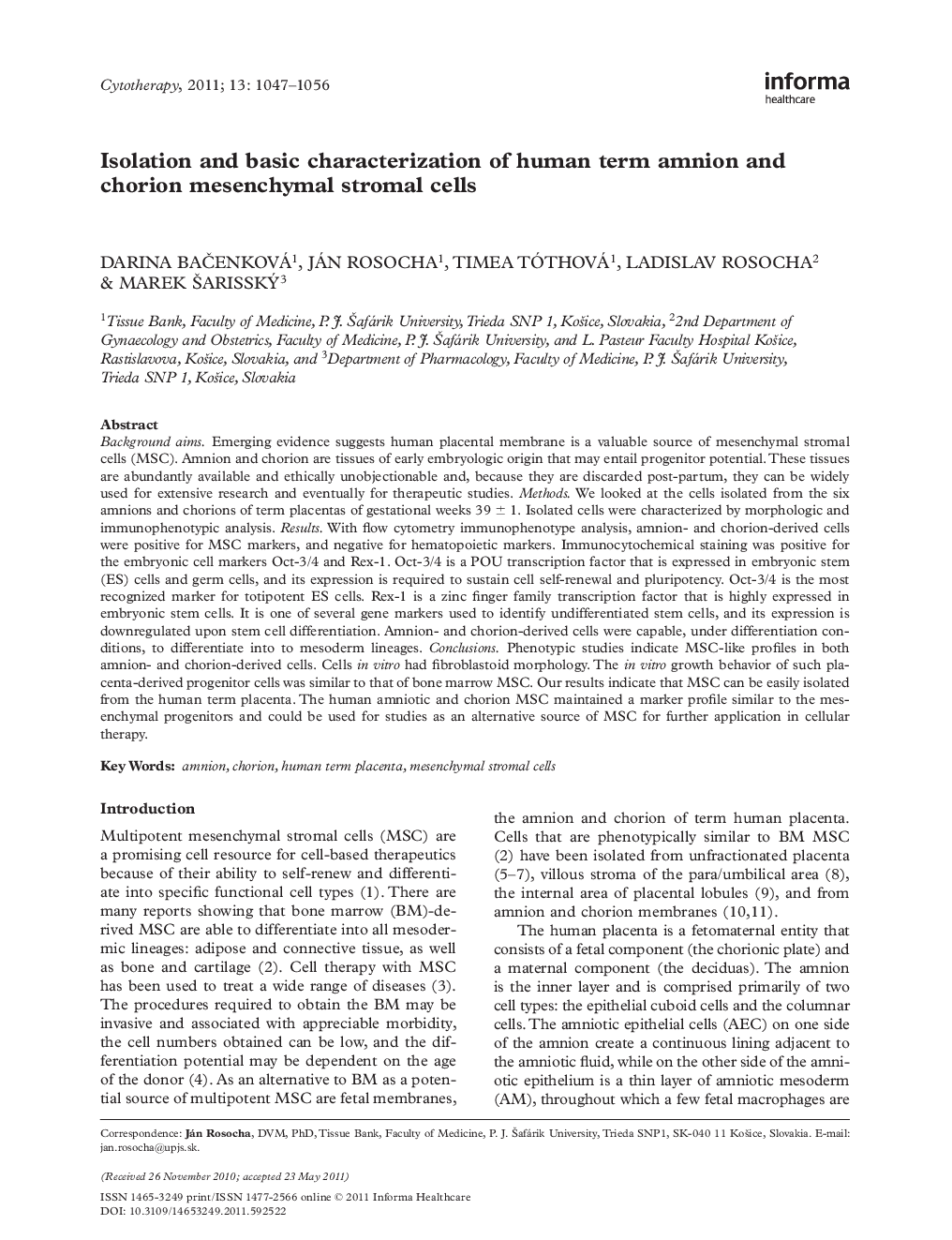| Article ID | Journal | Published Year | Pages | File Type |
|---|---|---|---|---|
| 2172025 | Cytotherapy | 2011 | 10 Pages |
Background aimsEmerging evidence suggests human placental membrane is a valuable source of mesenchymal stromal cells (MSC). Amnion and chorion are tissues of early embryologic origin that may entail progenitor potential. These tissues are abundantly available and ethically unobjectionable and, because they are discarded post-partum, they can be widely used for extensive research and eventually for therapeutic studies.MethodsWe looked at the cells isolated from the six amnions and chorions of term placentas of gestational weeks 39 ± 1. Isolated cells were characterized by morphologic and immunophenotypic analysis.ResultsWith flow cytometry immunophenotype analysis, amnion- and chorion-derived cells were positive for MSC markers, and negative for hematopoietic markers. Immunocytochemical staining was positive for the embryonic cell markers Oct-3/4 and Rex-1. Oct-3/4 is a POU transcription factor that is expressed in embryonic stem (ES) cells and germ cells, and its expression is required to sustain cell self-renewal and pluripotency. Oct-3/4 is the most recognized marker for totipotent ES cells. Rex-1 is a zinc finger family transcription factor that is highly expressed in embryonic stem cells. It is one of several gene markers used to identify undifferentiated stem cells, and its expression is downregulated upon stem cell differentiation. Amnion- and chorion-derived cells were capable, under differentiation conditions, to differentiate into to mesoderm lineages.ConclusionsPhenotypic studies indicate MSC-like profiles in both amnion- and chorion-derived cells. Cells in vitro had fibroblastoid morphology. The in vitro growth behavior of such placenta-derived progenitor cells was similar to that of bone marrow MSC. Our results indicate that MSC can be easily isolated from the human term placenta. The human amniotic and chorion MSC maintained a marker profile similar to the mesenchymal progenitors and could be used for studies as an alternative source of MSC for further application in cellular therapy.
